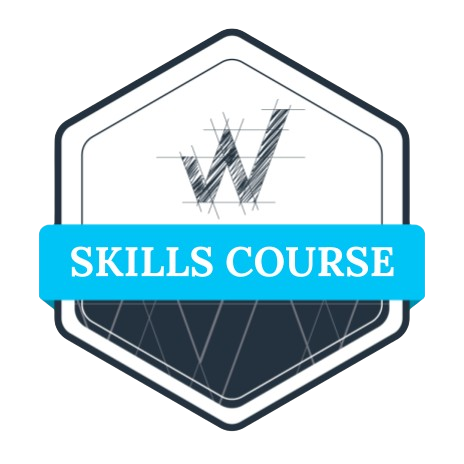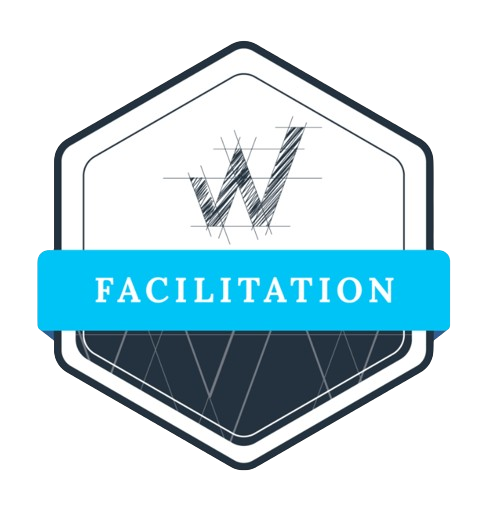
How many times have you been through a sales meeting and haven’t reached your objective?
Perhaps you’ve spent a lot of time building rapport with your prospect, talking about the great break you had over summer, only to realise that you’ve run out of time to talk about the things you need to progress from a business perspective.
Too many sales reps are running old school sales meetings that focus predominantly on their business in the beginning, and the customer is almost an afterthought. This way of running a meeting means you are missing a huge opportunity to truly understand exactly what the challenges are your customer is facing, and whether or not you can help them.
Too many sales reps are running old school sales meetings that make the customer an afterthought.
This style of meeting is more about “shooting the shit”, and it doesn’t focus on the customer and their needs. It’s not a customer-centric approach to conducting your meetings, and people are becoming impatient with this approach. They don’t have time to speak to someone they don’t know about the weather. They want to get the information they need, understand whether or not you can help them, and then get back to their business day.
I find that the best sales reps use a structure for going out there and running effective sales meetings, and it looks like the six-step diagram below:

This process actually starts well before the meeting ever takes place. For example, how many times have you organised a meeting where people just don’t rock up? There is a huge amount of wasted time sitting around waiting for someone to turn up, and then if they don’t you probably follow up with a barrage of emails and voicemails to each other trying to reschedule.
That’s why your efforts for running an effective sales meeting all start with the way you schedule it…
Step 1 — Schedule
So the first important step in running an effective sales meeting is scheduling. Traditionally scheduling has been a time consuming process.
There’s a lot of technology out there today to assist you in the process of scheduling meetings. Tools such as Calendly, ScheduleOnce and HubSpot provide the opportunity for you to invite a prospect, allow them to pick a free timeslot in your calendar, and easily schedule reminders for a meeting.
The challenge with these tools, and this style of scheduling a meeting, is that it isn’t very customer-centric. You’re asking them to fit into your calendar.
Another way to approach it is to ask them to offer two potential times that work for them. This shows them that you appreciate that they have a busy schedule, and that you are willing to fit into that schedule. Then if they’d prefer to pick a time from your online calendar, give them that option as well.
Step 2 — Invite
Once you have found a time that works for both parties, the next step is to send the invitation.
A lot of people send blank invitations with no information about why the meeting is even going ahead, or what the person should prepare for. The problem with this approach is if the person you have invited forwards the invite onto someone else in the business. This new meeting attendee has absolutely zero context or understanding about what this meeting is about.
So you really need to make sure that you include the goals and vision of the meeting within the invite. Outline who should be there, where they need to be, or how they should dial in. Maybe it’s just a phone number, and that’s great — because it’s something.
Whenever you have multiple people joining the meeting, it’s essential to outline the important details so that the meeting can get underway without a glitch.
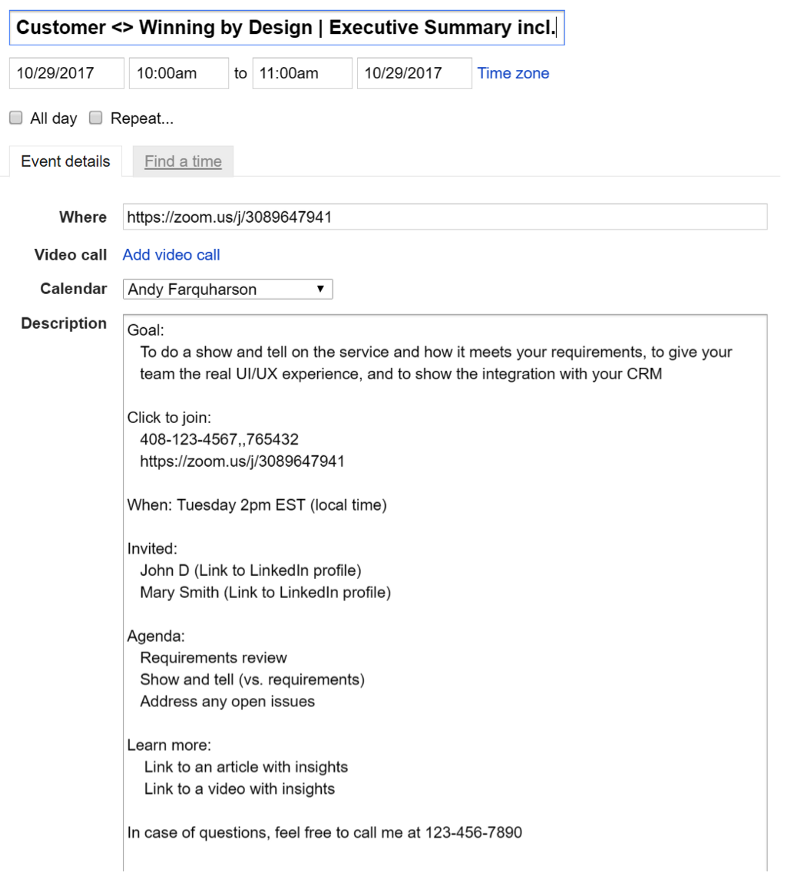
Step 3 — Confirm
This third step is a big one that a lot of people forget, and it’s all about confirming whether or not someone can actually attend a meeting.
The best time to get a confirmation is with a courtesy email that you send to all attendees 24 hours prior to the meeting, reminding them they have a meeting commitment. It’s also a good opportunity to share some additional thoughts, research, or talking points into the mix. This email primes them for the conversation you want to have with them in the meeting.
Another confirmation email that is helpful — especially if you are hosting the meeting online, on a conference call, or over a screen share platform — is a quick reminder 5 minutes before the meeting is about to kickoff. All it needs to say is something like, “Hey, if you’re anything like me you’re probably looking for the dial in details right now. Here they are.”
It’s amazing how these two small confirmation actions can have a huge impact on the amount of people who actually attend your meetings, and also help you best use your time when the meeting gets going.
Step 4 — Prepare
Preparing for your sales meeting might sound like a no brainer, but you’d be surprised at how many reps go into important meetings under-prepared, ready to wing it and see what happens.
There’s a wealth of information out there about the company that you’re meeting, the individuals in that company, and the industry that they work in. If you are well prepared you won’t waste your time at the meeting talking about the weather. Instead you will be able to have a professional conversation that positions you as an expert in the industry.
When planning for your sales meeting, there are four main things you want to look for:
1. Who are the individuals that are going to attend?
Check the invite and be sure you know exactly who is scheduled to turn up to the meeting. Once you know who is attending, jump on LinkedIn and conduct some research into each individual so you know as much as you can about the people that are going to be in the room, or on the call. Make sure you understand what each individual’s unique vantage point is and why they may be interested in your solution.
2. What does their company look like?
Why is this company willing to have a meeting with you, what makes them a good candidate for your product or service? How many employees do they have? Where are they located? Have they been mentioned in the news lately? What’s going on in their world?
Make sure you intimately know the company you are about to meet with, and see your solution through their lens. Of course you should go in with open ended questions, but it’s also helpful to predict the way in which they could use your solution.
Make sure you intimately know the company you are about to meet with, and see your solution through their lens.
3. What’s going on in the industry?
It’s also a great idea to have a good understanding of what’s happening in their industry. This means that if there is some spare time at the start of the meeting, you can have a casual conversation about what they are currently going through, so that it positions you as an expert.
4. What’s your objective?
The last piece of the puzzle in your planning for an effective sales meeting is your goal. You want to have a goal or an objective that you are going to be driving people towards during the meeting. It’s the light at the end of the tunnel that helps you visualise success and keeps you on track if the meeting ever goes off on tangents.
Step 5 — Meet
Now comes the time when the meeting actually happens and you need to focus on the business at hand.
When you’re making introductions at the start, you have to make sure it is brief and to the point. There’s a great framework you can follow to ensure that the customer knows that you care about them, and gives you permission to have an open dialogue. This framework is called AxNOT.
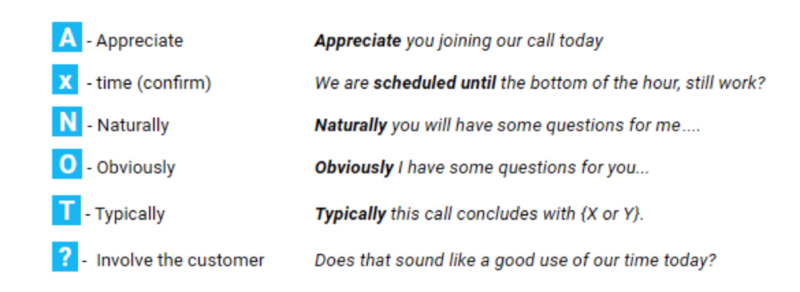
This stands for “A”, you appreciate their attendance. “X”, you are confirming how much time they have available. “N”, naturally they will have some questions for you. “O”, obviously you have some questions for them too. “T”, typically at the end of the meeting you are going to have a conversation about whether there is a fit.”?”, conclude your introduction by confirming that they agree that all of that is a good use of their time.
Once you have performed the AxNOT framework then you need to create a mutual agenda for the meeting. This is where you focus on what brought them to the meeting in the first place, and ask them what they would like to get out of the call. Because you set it up in the introduction, you’ve got permission to have an open dialogue.
As you approach the end of the meeting, based on the time they agreed they had available, it’s time to start talking about those next steps. It’s then up to you to orchestrate what happens after the meeting to progress your agenda. This allows you to lead into the next meeting, called ‘connecting the wagons.’ As seen in the picture below;
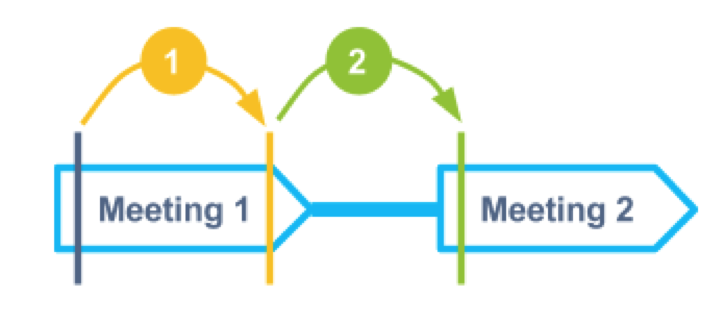
The biggest thing to be aware of is that you allocate the time throughout the meeting appropriately, and communicate that with the people you are meeting with. Because without doing that, and without deliberately talking about the next steps after the meeting, it’s far too common for meetings to end with no outcome at all.
Step 6 — Follow Up
An effective sales meeting certainly doesn’t end when you get off the call, or leave the building. The follow-up is extremely important to reinforce the key things you discussed and make sure that those next steps actually happen.
The key to a good follow up is to do it quickly. You can do it over the phone, or by email, but either way it needs to be short. The purpose of the follow up is to make sure that you have captured everything correctly and get the prospect to confirm that. If you can outline their situation and the challenges they are facing in an email, you then have something clear and concrete to refer back to during the sales process.
Conclusion
This is a fairly simple six-step process for running an effective sales meeting. It all starts well before the meeting takes place, and finishes well and truly after you hang up that phone or leave the prospect’s office.
The real beauty of running an effective sales meeting is that you can start to orchestrate the next step in the sales process. No doubt you’ve finished a sales meeting at some point where you’ve said, “Let’s catch up in a couple of weeks.” But why are you catching up? What’s on the agenda?
By using the AxNOT framework and using every minute of the time you have assigned during the meeting deliberately, it enables you to connect the wagons to that next step with more rigour and ensure the meeting has a purpose and will progress the sales agenda.
The next step may be another meeting, or it may be a demonstration, or a proposal. Whatever it is, by knowing what happens next and running an effective sales meeting you will naturally increase the conversion rates at each important point in your sales process.
